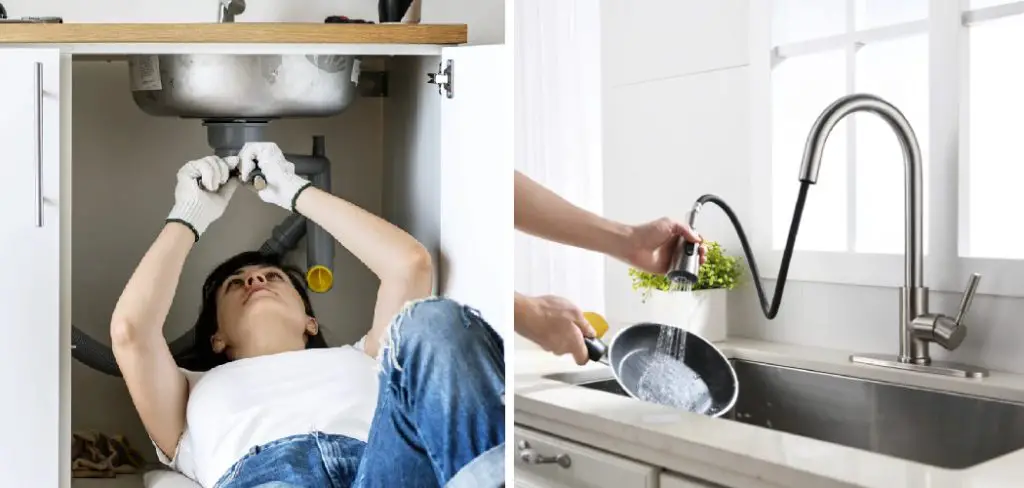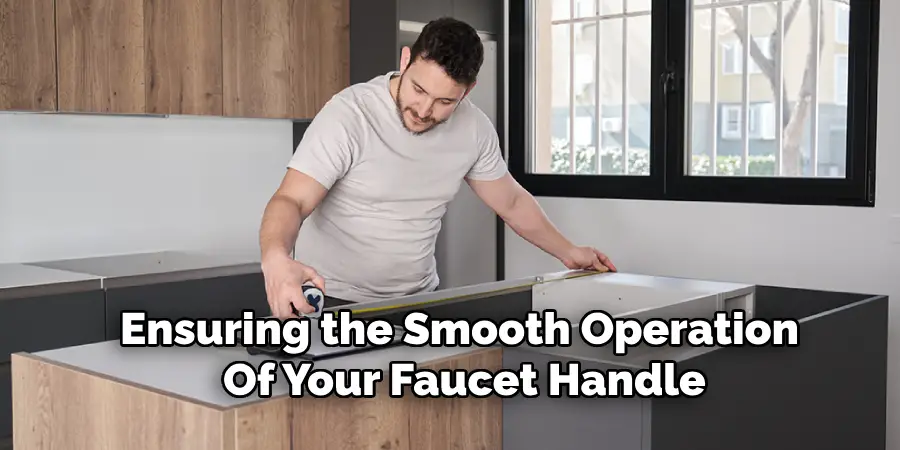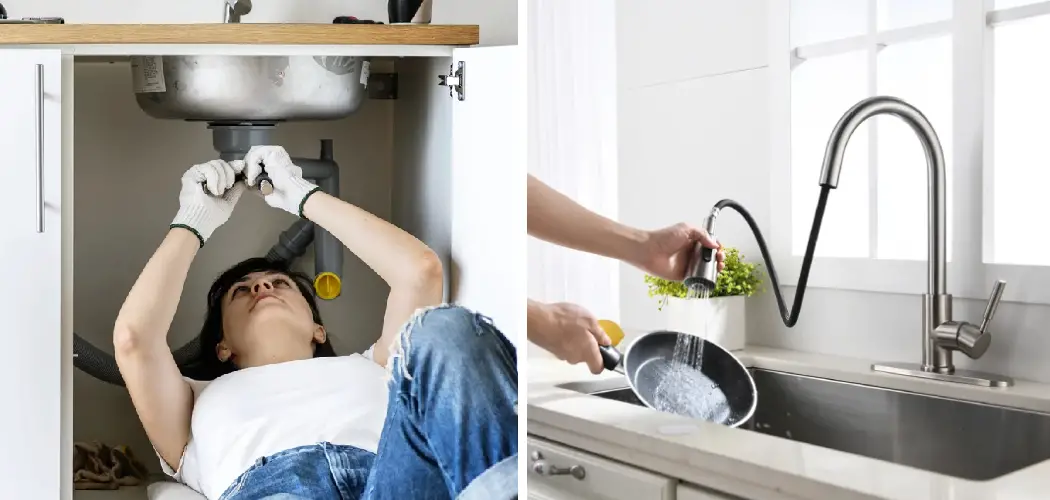Measuring for a new kitchen faucet is a crucial step in ensuring a seamless installation and optimal functionality. Selecting the right faucet not only enhances the aesthetics of your kitchen but also ensures compatibility with your existing sink and countertop setup. To begin, understanding the dimensions and configurations of your current sink and countertop is essential. Key measurements include the distance between mounting holes (center-to-center spacing), the diameter of these holes, and the overall clearance needed for the faucet’s height and spout reach.

Additionally, you need to account for the sink’s depth and the surrounding space to prevent any interference with cabinets or walls. Properly measuring for a new kitchen faucet involves using precise tools, such as a tape measure and calipers, to gather accurate dimensions. This guide will walk you through the step-by-step process of how to measure for new kitchen faucet, ensuring that you select a faucet that fits perfectly, functions efficiently, and complements your kitchen’s design.
Importance of Properly Measuring for a New Kitchen Faucet
Properly measuring for a new kitchen faucet is vital to avoid common installation issues and ensure a perfect fit. Inaccurate measurements can lead to several problems, such as a faucet that doesn’t align with the pre-drilled holes, inadequate clearance for operation, or even water leakage. Taking the time to measure correctly prevents the hassle of returns and replacements, saving you both time and money.
It also guarantees that the new faucet will integrate seamlessly with your existing plumbing and kitchen layout. Moreover, precise measurements ensure that the faucet’s design complements your kitchen, creating a harmonious and functional space. Ultimately, accurately measuring for your new kitchen faucet is the foundation for a smooth installation process and long-lasting satisfaction.
Understanding Faucet Basics
Before delving into the specifics of measuring for a new kitchen faucet, it’s essential to understand the basic types and components of faucets. Kitchen faucets come in various styles, each designed to cater to different needs and preferences. The most common types include single-handle faucets, double-handle faucets, pull-out and pull-down faucets, and touchless faucets.
- Single-handle Faucets: These faucets operate with one handle that controls both the water temperature and flow. They are popular for their simplicity and ease of use.
- Double-handle Faucets: Featuring separate handles for hot and cold water, these faucets offer more precise temperature control but can be more challenging to install.
- Pull-out and Pull-down Faucets: These feature a spray head that can be pulled out or down towards the sink, offering enhanced flexibility for washing dishes and cleaning the sink area.
- Touchless Faucets: Equipped with sensors, these faucets allow for hands-free operation, adding convenience and improving hygiene in the kitchen.

10 Methods How to Measure for New Kitchen Faucet
1. Measuring Faucet Hole Spacing
The first step in measuring for a new kitchen faucet is to determine the hole spacing on your sink or countertop. Most sinks have pre-drilled holes for faucet installation. Measure the distance between the centers of these holes, often referred to as the center-to-center spacing. Use a ruler or measuring tape, ensuring accuracy. Standard hole spacings include single-hole, 4-inch centerset (where the faucet handles and spout are within 4 inches of each other), and 8-inch widespread (where the handles and spout are spread further apart). This measurement will help you select a faucet that fits your sink’s configuration.
2. Assessing Sink Mounting Type
Different sinks have different mounting types, which affect the faucet selection. Determine whether your sink is a top-mount (drop-in) or under-mount. Top-mount sinks have a visible rim on the countertop, while under-mount sinks are installed beneath the countertop for a seamless look. Measure the thickness of the countertop where the faucet will be mounted. This thickness can affect the type of faucet mounting hardware you need. Knowing the sink mounting type and countertop thickness ensures you choose a faucet compatible with your setup.
3. Measuring Countertop Clearance
Countertop clearance is another important consideration, particularly if there are cabinets or shelves above your sink. Measure the vertical space from the sink or countertop to any overhead obstructions. This height will determine the maximum height of the faucet you can install. Ensure there is enough clearance for the faucet spout and any handles or levers to operate freely.

Consider the arc of the faucet spout and the height of the faucet body to avoid any interference with overhead structures.
4. Determining Reach and Height
The reach and height of the faucet are critical for functionality and convenience. The reach refers to the horizontal distance from the faucet’s base to the spout’s tip, while the height is the vertical distance from the base to the highest point of the faucet. Measure the width and depth of your sink basin to determine the appropriate reach.
A faucet with too short a reach might not direct water effectively into the sink, while one with too long a reach could cause splashing. Similarly, the faucet height should be suitable for the tasks you perform in your sink, such as filling large pots or washing tall items.
5. Measuring for Handle Clearance
Handle clearance is crucial for ensuring the smooth operation of your faucet handles. Measure the space around the faucet installation area to ensure there is enough room for the handles to move freely. Consider the full range of motion required for both hot and cold water handles or a single lever. Ensure the handles do not hit the backsplash, walls, or any other obstructions.

This is particularly important for faucets with large or wide handles, which require more space for operation.
6. Checking Water Supply Line Length
The length of the water supply lines is an important consideration when installing a new faucet. Measure the distance from the water supply valves (usually located under the sink) to the faucet’s installation point. Standard supply lines are typically 12 to 16 inches long, but you may need longer or shorter lines depending on your setup. Ensure that the new faucet comes with supply lines of adequate length, or be prepared to purchase extensions if necessary. Properly measuring the supply line length ensures a hassle-free installation and prevents any strain on the connections.
7. Verifying Compatibility with Existing Plumbing
Before selecting a new kitchen faucet, verify its compatibility with your existing plumbing. Measure the diameter of the water supply pipes and the connections on your current faucet. Standard sizes are typically 3/8 inch or 1/2 inch. Ensure the new faucet has compatible connections or comes with adapters to fit your existing plumbing. Additionally, check the water pressure and flow rate requirements of the new faucet to ensure your plumbing system can provide adequate water supply.
8. Considering Faucet Arc Style
The arc style of the faucet affects both functionality and aesthetics. Faucets are generally categorized as high-arc, mid-arc, or low-arc. Measure the vertical space available and consider how the arc style will impact your kitchen tasks. High-arc faucets offer more space for filling large pots and washing bulky items but require more clearance. Mid-arc faucets provide a balance between height and reach, suitable for most kitchen tasks. Low-arc faucets are more compact and suitable for smaller sinks or tight spaces. Choose an arc style that complements your kitchen layout and meets your practical needs.
9. Measuring Spray Hose Length
Many modern kitchen faucets come with pull-out or pull-down spray hoses. Measure the length of the spray hose to ensure it provides adequate reach for your sink and surrounding area. Consider how far you need the spray hose to extend for tasks such as rinsing the sink, filling pots on the countertop, or cleaning adjacent areas. A hose that is too short may limit functionality, while an excessively long hose can be cumbersome. Ensure the spray hose length meets your requirements for flexibility and convenience.
10. Reviewing Overall Aesthetic and Functional Fit
Beyond the technical measurements, consider the overall aesthetic and functional fit of the faucet within your kitchen. Measure the height and reach in relation to other elements in your kitchen, such as windows, shelves, and cabinetry. Ensure the faucet’s design complements your kitchen décor and meets your ergonomic preferences.

Consider features such as handle style, spout design, and finish. A faucet that fits well within your kitchen’s layout and style will enhance both its functionality and visual appeal.
Conclusion
Measuring for a new kitchen faucet involves a combination of technical precision and practical consideration. Each method described above offers a detailed approach to ensure the faucet you choose will fit your sink, countertop, and plumbing system while meeting your functional and aesthetic needs.
From determining hole spacing and countertop clearance to assessing handle and spray hose length, these comprehensive guidelines provide a robust framework for selecting the perfect kitchen faucet. Thanks for reading our blog post on how to measure for new kitchen faucet! We hope you found it helpful and informative.

